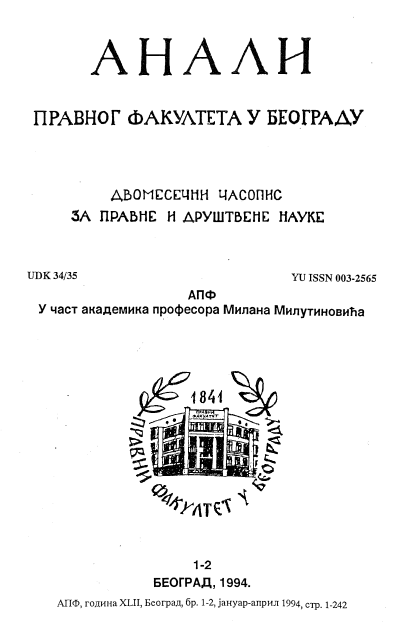ТРИАНГУЛАЦИЈА У КРИМИНОЛОГИЈИ
TRIANGULATION IN CRIMINOLOGY
Author(s): Đorđe M. IgnjatovićSubject(s): Criminal Law, Criminology
Published by: Правни факултет Универзитета у Београду
Keywords: Triangulation; Method; Theory; Criminological systems; Synthesis
Summary/Abstract: There are two basic meanings of the term "triangulation". In its narrow meaning, it is a term covering the use of two or more methods, namely of engaging two research workers for one and the same project. In terms of the nature of combined methods there are external and internal triangulations. In its wider meaning, the term includes the use of various, first of all theoretical, approaches to the same research. This second meaning ("coinciding of theoretical concepts") served as a basis for explaining the causality of crime. Every criminal conduct is caused by a connection of two groups of factors - personal characteristics of the individual and external (first of all social) factors. Relevant effect is not always the same in all act (those where external factors dominate are marked in the graph by "y", the act where personal factors prevail is marked by "x", while "m" is the mark for acts where there is some kind of balance of these factors). Finally, the logic which is a grond for triangulation has served to the author also in setting forth the system of criminology as a science. Along these lines, criminology is a single science which should not be divided into independent disciplines (such as criminal anthropology, psychology, biology or criminal sociology). It integrates their knowledges (integrative approach) which relate to its subject-matter - namely, criminal phenomenon, conceived as a common term for the crime, for the perpetrator and for the victim, as well as for the criminality and social reaction to socially dangerous acts. In its widest meaning - as observation of the same object from different angles - triangulation points at the necessity to approach such subject-matter of criminology so as to include all three relevant dimensions: etiological (causal), phenomenological (descriptive) and victimological (victim’s aspect). In such a way artificial division is eliminated of criminology into branches - criminal phenomenology, criminal etiology and victimology.
Journal: Анали Правног факултета у Београду
- Issue Year: 42/1994
- Issue No: 1-2
- Page Range: 62-74
- Page Count: 13
- Language: Serbian

